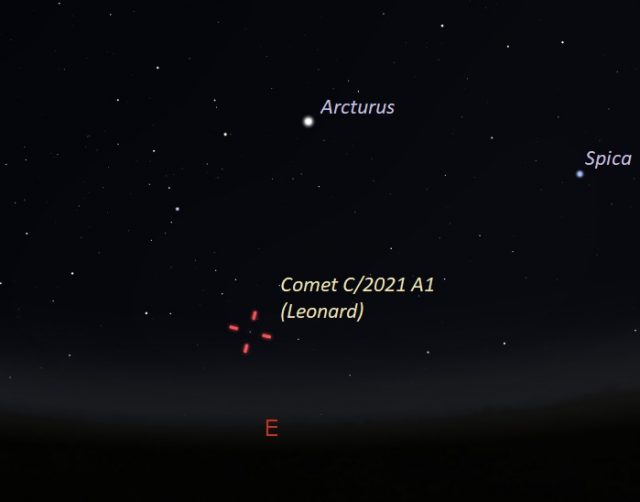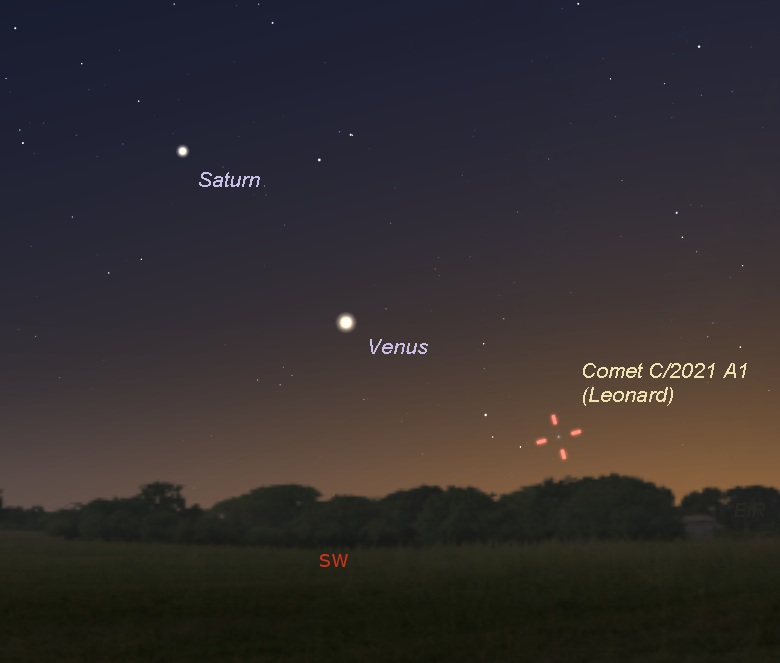
This is because the 5 degree tilt of the Moon is inclined versus the ecliptic (the outline of the path of the Earth around the Sun), not the tilt of the Earth’s axis. In 2022 the path of the Moon is ‘ecliptic-like’ this year, but expect it to get steeper towards 2025. Full Moon occurs on January 17 th, also known as the Full Wolf Moon. The Moon reaches New phase early in January on the 2 nd, just 19 hours after perigee on New Year’s Day.
COMET LEONARD STELLARIUM DRIVER
Sirius is actually only 8.7 light-years distant, and at declination -16 degrees 45’, is visible just about worldwide.įun fact: Though it’s northern hemisphere winter in January, the Earth is actually at perihelion or its closest point to the Sun in the current epoch early in the first days of the year, as the tilt of the planet is a much larger driver of the seasons.

In the northern or southern hemisphere, the December 31st sky on New Year’s Eve always has a fine marker to ring in the year: Sirius (Alpha Canis Major), the brightest star in the sky, culminates at midnight. And although 2020 didn’t see the red giant star go supernova, January would be a fine time for the giant star to finally burst, either tonight over thousands of years from now. Flashback to January 2020, and all eyes were on the bright star Betelgeuse, as the bright star in the shoulder of Orion underwent a historic dimming. January evenings give us a glimpse of our nearby galactic neighbors in the Orion Spur arm of the Milky Way galaxy. Ironically, the coldest nights are often the clearest and most stable, as the frigid winter air radiates heat back into space.


The month of January may be the first full month of northern hemisphere winter, but there’s always several reasons to brave the cold.


 0 kommentar(er)
0 kommentar(er)
